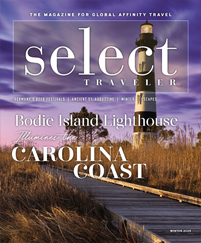Of all places and times in American history, few hold as much mystique and nostalgic allure as the old West. Today, the Rocky Mountain states have struck an ideal balance of highlighting the activities that have drawn settlers for millennia with interpretive experiences and new types of outdoor adventure.
Though many mountain ranges market two key tourist seasons — summer and winter — the area’s flora and fauna and deep history create activities for groups of all types year-round.
Red Rocks, Colorado
In Italy and Greece, music and theater lovers still flock to the same amphitheaters their ancient ancestors carved into hillsides to naturally amplify sound. Red Rocks, a stone formation that has been venerated by native peoples and hikers for centuries, naturally reproduces the same effect, but with even better acoustics and a more dramatic backdrop.
Throughout the warmer months, the amphitheater, just 15 miles from Denver, hosts the likes of Bruce Springsteen and Tom Petty mixed in with films, some accompanied by live music, in the evening. Nature lovers take over during the day.
Hikes around the rocks range from strenuous to a golf-course-like 1.5-mile trail that rambles up and over the rocks. Groups can off-load buses near the top of the formation and walk down the steps to the amphitheater, taking in views of the entire Denver area, and wrap up with yoga, geology and archaeology programs before drinking up the view from the outdoor patio at the Ship Rock Grill.
Groups looking for concert tickets should book as soon as sales open because the 9,000-seat space fills up rapidly. If you can’t make it in the evening, your group can have the chance to hop up onstage and check out the acoustics themselves during a daytime visit.
Black Hills, South Dakota
In an area that packs in so many of South Dakota’s top attractions — Mount Rushmore, Badlands National Park and the Crazy Horse Memorial, to name a few — there are no bad times to visit the Black Hills. But fall, and this fall in particular, tops the list. This month, one of the country’s largest buffalo and bison round-ups takes over 7,100 acres of Black Hills wilderness, and celebrations in honor of South Dakota’s 125th year of statehood give Mount Rushmore and other major sites a packed activity schedule.
Groups should take a minimum of three days to fully experience the Black Hills, whose national parks and monuments bring the history of the Old West to life. Highlights include the mountain carvings exploring Native American culture at Crazy Horse and the fully restored historic district of Deadwood, where re-enacted shootouts on cobblestoned Main Street punctuate visits to saloons and the graves of Wild Bill and Calamity Jane.
Scenic drives, such as Speaking Canyon Scenic Byway, bring visitors surprisingly close to many of the area’s most striking natural sights. Some areas are not accessible by standard motorcoach, particularly Iron Mountain road and Needles Highway, which gets its name because of the needle-thin passages through rocks that envelop the highway in some places.
Sun Valley, Idaho
Some mountain towns in the Rockies have preserved their heritage, but many say that time has stood still in Sun Valley. Although it boasts 3,400 vertical feet of skiing, with lifts offering access to both sides of the mountain, the town has remained much as it was 50 years ago. All businesses are locally, independently owned, lines for the lifts are rare, and people say they feel like they’re at an exclusive country club when they’re on the slopes, according to Greg Randolph, director of public relations and social media for Visit Sun Valley.
The quick, eight-minute gondola ride up the mountain is a popular way to start a trip in any season. Two-thirds of the way up the mountain, visitors can hop off for a meal or a drink at the original lodge, built in 1939 when the area was first developing as a ski destination.
Spring is one of the most popular times in Sun Valley because, due to its proximity to Idaho’s Owyhee Desert, spring is more mild there than at other places at that elevation. The world-renowned Sun Valley Film Festival takes place in March, and by early June, the wildflowers explode with enough color and vibrancy to give the Alps a run for their money.









